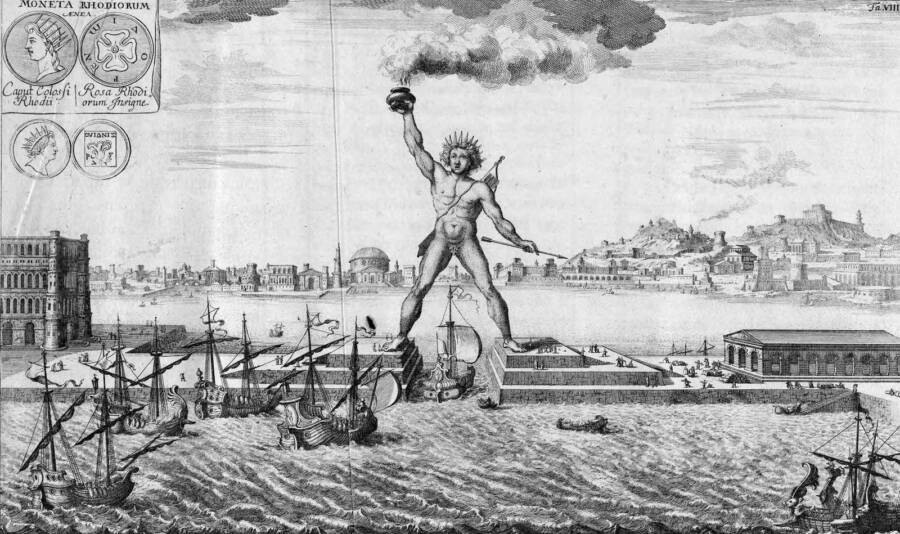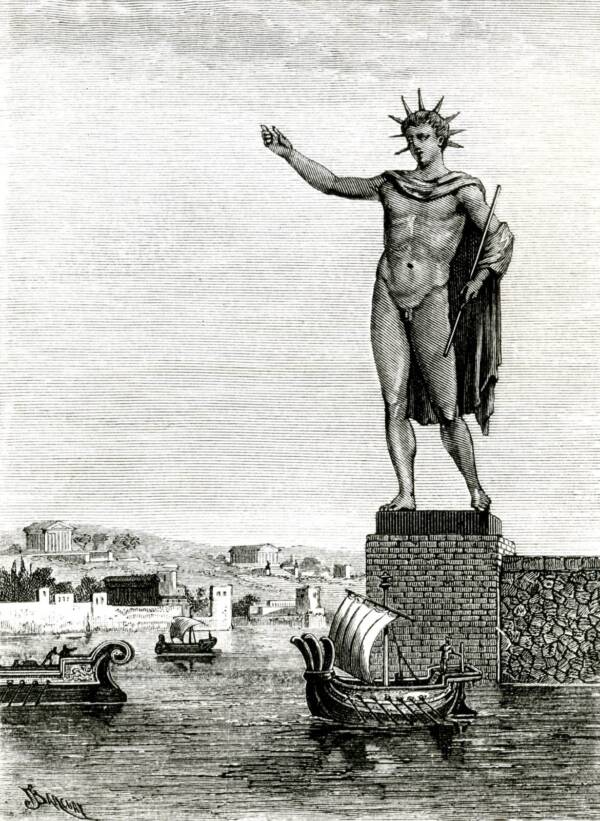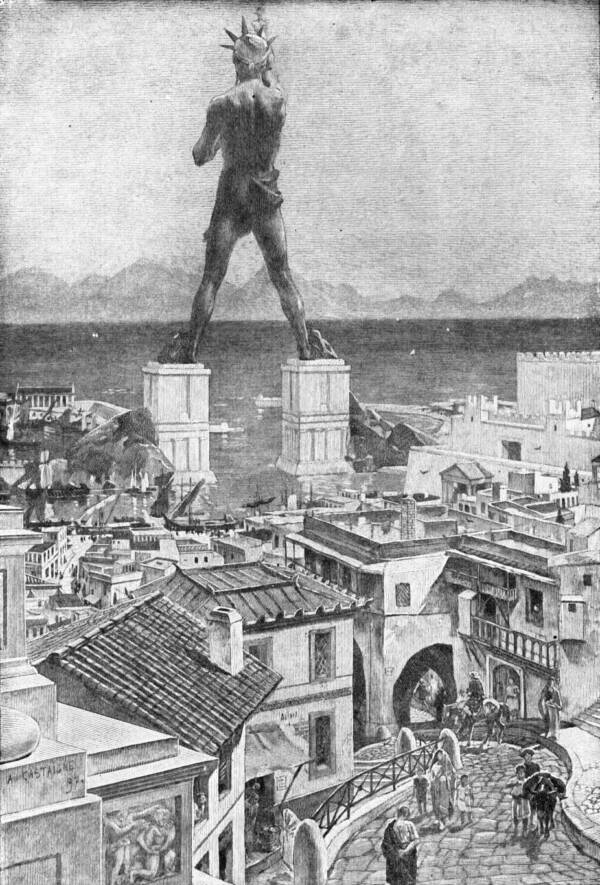The Colossus Of Rhodes In Greece

Historical Picture Archive/CORBIS/Corbis via Getty ImagesA depiction of the Colossus of Rhodes, which was destroyed by an earthquake.
The Colossus of Rhodes was more than just an enormous statue — it was a symbol of hope and the preservation of a way of life that had teetered on the brink of destruction.
In the late fourth century BCE, the city of Rhodes was facing a serious threat from Antigonus I Monophthalmus, the ruler of Cyprus, who had marshaled his army to besiege the island.
At the eleventh hour, help appeared on the horizon: Rhodes’s ally, Ptolemy I of Egypt, had sent relief forces. Pinched between the newcomers and the island’s defenses, the army from Cyprus retreated, abandoning the great siege engines that had terrorized the city.

Public DomainScholars agree that the statue likely stood with its feet together since otherwise its destruction would have blocked the harbor.
The victors sold the machines and used the proceeds to fund the construction of the largest statue in the ancient world, a tribute to their patron god, Helios.
As was fitting for a sun god, the 108-foot-tall colossus’s skin was made from bronze panels, so that when the sun rose on the Mandraki harbor, the statue would blaze with reflected glory.
Its bones were, according to legend, made from the iron that had been used in the siege equipment, and the wood for the scaffolding came from the siege towers.
It was finished in 280 BCE after 12 years of labor. The people of Rhodes dedicated it to Helios and inscribed it with a tribute to all those who fight for freedom and independence.
Sadly, the Colossus of Rhodes was the shortest-lived of the Seven Wonders of the Ancient World. It guarded the Rhodes harbor for just over 50 years before an earthquake brought it to its knees in 226 BCE.

Public DomainAnother depiction of the Colossus of Rhodes before its ruin.
Despite Ptolemy’s offer to repair the broken statue, the people of Rhodes, on advice from an oracle, politely declined and decided to let the colossus rest where he fell. The toppled statue lay in the earth for 800 years, and people from all over the Hellenic world came to pay homage to it.
Do these pictures of the statue look familiar? They should — the ancient wonder is said to have inspired the creators of the Statue of Liberty, who gave the lady a corona not unlike the sun god’s. She, like the Colossus of Rhodes, is a reminder of dearly won freedom and the spirit of independence.





